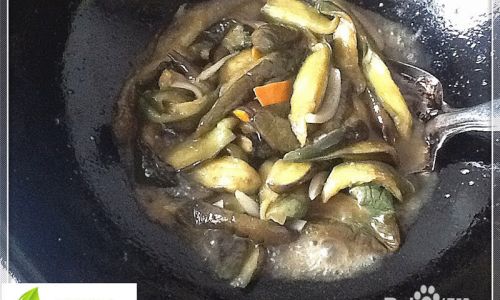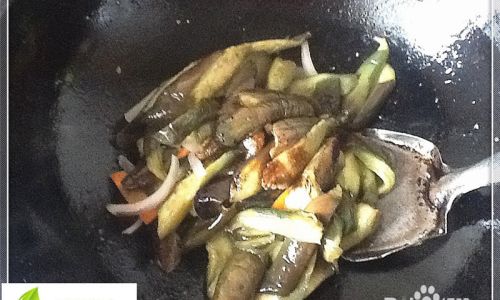Introduction
In the vast culinary landscape of global dishes, Chinese cuisine stands out for its intricate balance of flavors, diverse cooking techniques, and the harmonious blending of ingredients. Among the myriad of delicious stir-fries that Chinese kitchens produce, eggplant stir-fried with onions (often referred to as “Qiezi Chao Yangcong” in Mandarin) holds a special place. This dish is not only vibrant and colorful but also offers a delightful medley of textures and tastes. The key to making this humble vegetable combination truly mouthwatering lies in mastering a few essential cooking techniques and understanding the nuances of seasoning. This article aims to guide you through the journey of crafting a perfect plate of eggplant stir-fried with onions, ensuring every bite is a delightful explosion of flavors.
Understanding the Ingredients

Before diving into the cooking process, it’s crucial to understand the stars of our dish: eggplant and onion.
Eggplant (Aubergine):
Eggplants, also known as aubergines, come in various shapes, sizes, and colors, ranging from deep purple to green and even white varieties. For this recipe, the classic deep purple eggplant is preferred due to its rich color and tender flesh. Eggplants have a natural tendency to absorb oil, which can make them soggy if not handled properly. Therefore, selecting firm, glossy eggplants without bruises or soft spots is essential.
Onion:
Onions add a layer of sweetness and savoriness to the dish. They come in different varieties such as red, yellow, and white onions, each with its unique flavor profile. For stir-fries, yellow or white onions are typically used as they offer a balanced sweetness and pungency that complements the earthiness of eggplant.
Other Ingredients:
- Garlic: Adds a subtle aroma and depth to the dish.
- Ginger: Provides a fresh, slightly spicy note.
- Soy Sauce: Essential for that classic umami flavor.
- Oyster Sauce: Adds a rich, creamy texture and enhances the overall taste.
- Sesame Oil: A drizzle at the end brings out a nutty aroma.
- Vegetable Oil: For stir-frying.
- Salt and Pepper: To taste.
- Green Onions or Coriander: For garnish.
Preparation Techniques
-
Choosing and Preparing the Eggplant:
- Select firm eggplants with smooth, glossy skin.
- Cut the eggplant into bite-sized pieces or strips, depending on your preference. Soaking the cut eggplant pieces in saltwater for about 10 minutes can help draw out excess moisture, preventing them from becoming too soggy during cooking. Pat them dry with paper towels before use.
-
Slicing the Onions:
Peel and thinly slice the onions. For a more textured dish, you can mix thin slices with some chopped pieces.

-
Mincing Garlic and Ginger:
Peel and finely mince the garlic and ginger. These aromatics will form the base of your stir-fry sauce.
Cooking Steps
-
Heating the Pan:
Start by heating a wok or large frying pan over medium-high heat. Add a generous amount of vegetable oil. The key to a successful stir-fry is a hot pan and sufficient oil to ensure the vegetables cook evenly without sticking.
-
Stir-Frying the Aromatics:
Once the oil is hot, add the minced garlic and ginger. Stir-fry for about 30 seconds until fragrant but not burnt. This step is crucial as it sets the foundation for the dish’s flavor.
-
Adding the Onions:

Quickly add the sliced onions to the pan. Stir-fry for about 2-3 minutes until they start to soften and turn translucent. The onions should still have a bit of crunch to them.
-
Cooking the Eggplant:
Push the onions to the side of the pan and add the eggplant pieces. Stir-fry for about 5-7 minutes, stirring occasionally to ensure even cooking. The eggplant should turn tender but still hold its shape. If the pan seems dry, add a little more oil.
-
Seasoning:
Once the eggplant is tender, mix it with the onions. Add 2-3 tablespoons of soy sauce and 1-2 tablespoons of oyster sauce. Stir well to coat all the vegetables evenly with the sauce. Taste and adjust with salt and pepper as needed.
-
Finishing Touches:
- Drizzle a teaspoon of sesame oil over the stir-fry. This step adds a delightful nutty aroma and richness to the dish.
- Stir in any remaining juices from the soy sauce and oyster sauce mixture, allowing them to reduce slightly and thicken, creating a glossy coating on the vegetables.
-
Garnishing:
Remove the stir-fry from heat and transfer it to a serving dish. Garnish with chopped green onions or coriander for a fresh, colorful finish.

Serving Suggestions
Eggplant stir-fried with onions pairs beautifully with a variety of dishes. Serve it as a side to a hearty main course like steamed rice, noodles, or even grilled meats. For a more complete meal, consider pairing it with a light soup or a simple green salad.
Troubleshooting Tips
- Soggy Eggplant: Ensure the eggplant pieces are dry before adding them to the pan. Stir-fry over high heat to evaporate any excess moisture.
- Burnt Aromatics: Keep a close eye on the garlic and ginger. They should only be stir-fried until fragrant, which takes mere seconds.
- Overcooked Vegetables: Stir-fry the vegetables over high heat but stir frequently to prevent burning. Remove from heat once they reach your desired tenderness.
Conclusion
Eggplant stir-fried with onions is a simple yet elegant dish that showcases the essence of Chinese stir-fry cooking. By following the steps outlined above, you can transform these humble vegetables into a culinary masterpiece. The key to success lies in meticulous preparation, proper cooking techniques, and a balanced use of seasoning. Remember, cooking is an art that requires patience, practice, and a love for food. With each attempt, you’ll inch closer to mastering this delightful dish, creating memories and satisfying palates with every bite.
As you journey through the kitchen, embrace the beauty of experimentation. Feel free to tweak the recipe to suit your taste preferences, perhaps adding a splash of rice vinegar for tang or a handful of chili flakes for a spicy kick. The beauty of home cooking lies in its adaptability and the joy it brings to those who share in your creations. Happy stir-frying!





0 comments